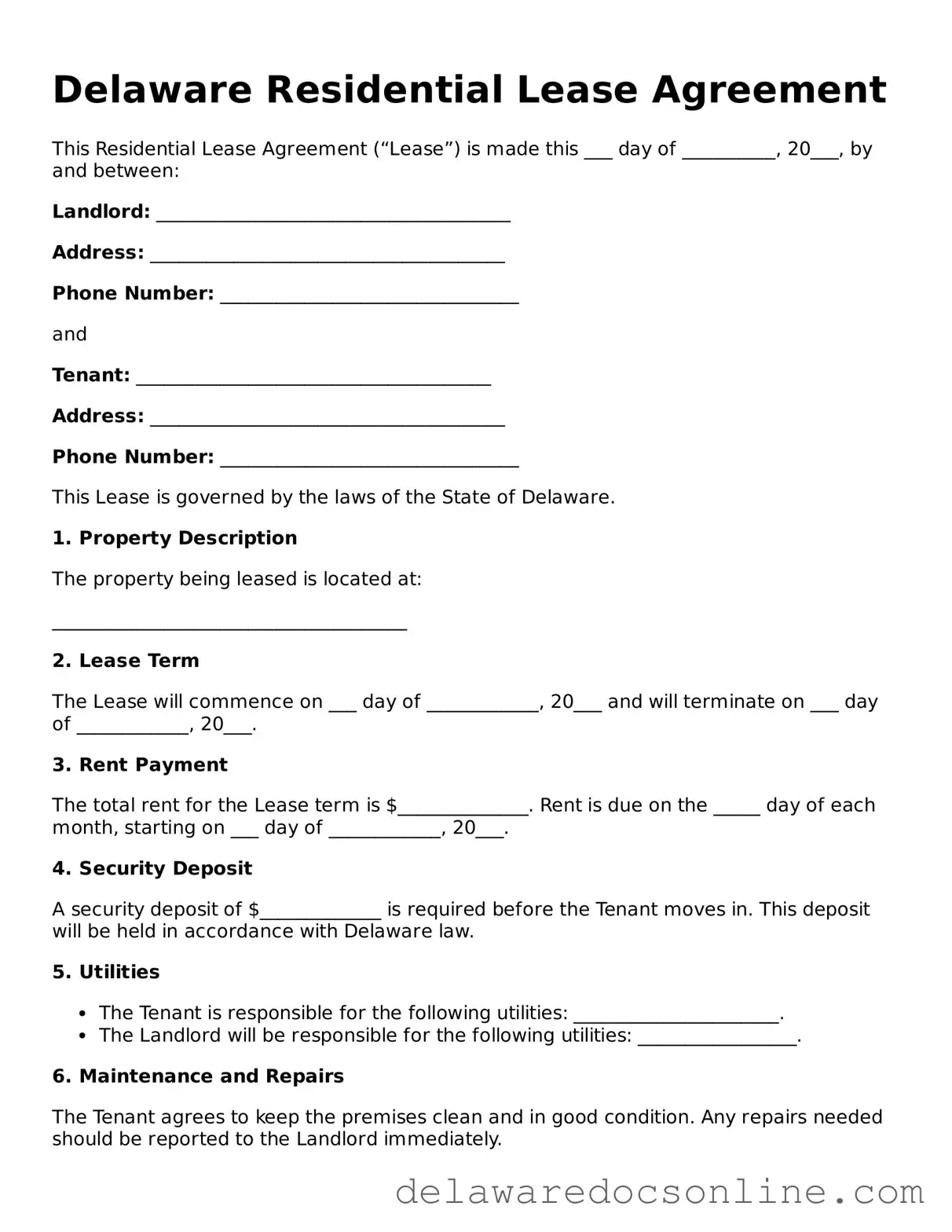Delaware Residential Lease Agreement
This Residential Lease Agreement (“Lease”) is made this ___ day of __________, 20___, by and between:
Landlord: ______________________________________
Address: ______________________________________
Phone Number: ________________________________
and
Tenant: ______________________________________
Address: ______________________________________
Phone Number: ________________________________
This Lease is governed by the laws of the State of Delaware.
1. Property Description
The property being leased is located at:
______________________________________
2. Lease Term
The Lease will commence on ___ day of ____________, 20___ and will terminate on ___ day of ____________, 20___.
3. Rent Payment
The total rent for the Lease term is $______________. Rent is due on the _____ day of each month, starting on ___ day of ____________, 20___.
4. Security Deposit
A security deposit of $_____________ is required before the Tenant moves in. This deposit will be held in accordance with Delaware law.
5. Utilities
- The Tenant is responsible for the following utilities: ______________________.
- The Landlord will be responsible for the following utilities: _________________.
6. Maintenance and Repairs
The Tenant agrees to keep the premises clean and in good condition. Any repairs needed should be reported to the Landlord immediately.
7. Pets
Pets are (allowed / not allowed) on the premises. If pets are allowed, additional terms apply:
______________________________________________________________________.
8. Termination
Either party may terminate this Lease by providing a written notice at least _____ days in advance.
9. Signatures
By signing below, both parties agree to abide by all terms of this Lease:
Landlord Signature: ___________________________ Date: ____________
Tenant Signature: ____________________________ Date: ____________
